
Forlì is a comune (municipality) and city in Emilia-Romagna, Northern Italy, and is, together with Cesena, the capital of the Province of Forlì-Cesena. It is the central city of Romagna.
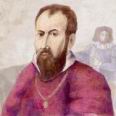
Melozzo da Forlì was an Italian Renaissance painter and architect. His fresco paintings are notable for the use of foreshortening. He was the most important member of the Forlì painting school.

Marco Palmezzano (1460–1539) was an Italian painter and architect, belonging to the Forlì painting school, who painted in a style recalling earlier Northern Renaissance models. He was mostly active near Forlì.

Guglielmo della Porta was an Italian architect and sculptor of the late Renaissance or Mannerist period.
Fabio Lombardi is an Italian ethnomusicologist and organologist who studied, at the Bologna University, with Roberto Leydi, Tullia Magrini and the organologist Febo Guizzi. Born in Meldola, Romagna, in the 1980s he made an ethnic musical field research in Emilia-Romagna, near Forlì and along the Bidente valley which has contributed to a better knowledge of Italian ethnic music, particularly regarding musical instruments: he discovered some unknown ethnic instruments both in Italy and Europe. For example, see: a type of mirliton improperly named "Ocarina" kazoo. Other Lombardi's works are on the local history of Meldola, Riccione, Forlì and other topics.

San Maurizio al Monastero Maggiore is a church in Milan, Northern Italy. It was originally attached to the most important female convent of the Benedictines in the city, Monastero Maggiore, which is now in use as the Civic Archaeological Museum. The church today is used every Sunday from October to June to celebrate in the Byzantine Rite, in Greek according to the Italo-Albanian tradition. It is also used as a concert hall.

The Lives of the Most Excellent Painters, Sculptors, and Architects, often simply known as The Lives, is a series of artist biographies written by 16th-century Italian painter and architect Giorgio Vasari, which is considered "perhaps the most famous, and even today the most-read work of the older literature of art", "some of the Italian Renaissance's most influential writing on art", and "the first important book on art history".
The Pinacoteca Civica of Forlì, one of the civic museums of Forlì and currently based in the Musei di San Domenico, is an Italian art gallery. Artists whose work the gallery exhibits include:
Baldassarre Carrari the Elder was an Italian painter who worked at Forlì about the year 1354.

The Carracci were a Bolognese family of artists that played an instrumental role in bringing forth the Baroque style in painting. Brothers Annibale (1560–1609) and Agostino (1557–1602) along with their cousin Ludovico (1555–1619) worked collaboratively. The Carracci family left their legacy in art theory by starting a school for artists in 1582. The school was called the Accademia degli Incamminati, and its main focus was to oppose and challenge Mannerist artistic practices and principles in order to create a renewed art of naturalism and expressive persuasion.
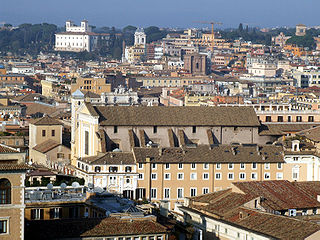
Santi Dodici Apostoli, commonly known simply as Santi Apostoli, is a 6th-century Roman Catholic parish and titular church and minor basilica in Rome, Italy, dedicated originally to St. James and St. Philip, whose remains are kept here, and later to all Apostles. Today, the basilica is under the care of the Conventual Franciscans, whose headquarters in Rome is in the adjacent building. It is the Station church for Friday, the first week of Lent.
Guglielmo da Forli, called Guglielmo degli Organi, was an Italian painter active in Forlì in the 14th century.
Fabrizio Paolucci (1726–1810) was a marquis (marchese) of the patrician Paolucci family. He is a relative of cardinal Fabrizio Paolucci, and an ancestor of Fabrizio Paolucci, who wrote biographies on the family.

Baldassare Carrari or Baldassarre Carrari il Giovane was an Italian painter of the Renaissance period, active in both his native Forlì and Ravenna from 1486 till his death in his town of birth. He was a pupil of the painter Niccolò Rondinelli.

Stefano Bonaccini is an Italian politician and member of the Democratic Party (PD), of which he is serving as president since 12 March 2023. Moreover, Bonaccini has been serving as the president of Emilia-Romagna since 24 November 2014. Bonaccini started his political career in the Italian Communist Party (PCI) and followed that party's transition toward social democracy, becoming one of the main representatives of the PD's reformist or moderate wing.
Madonna della Colonnella also known as the Santa Maria Annunziata alla Colonnella is a Renaissance-style Roman Catholic church located in Via Flaminia #96 in Rimini, region of Emilia-Romagna, Italy.
The following is a timeline of the history of the city of Forlì in the Emilia-Romagna region of Italy.
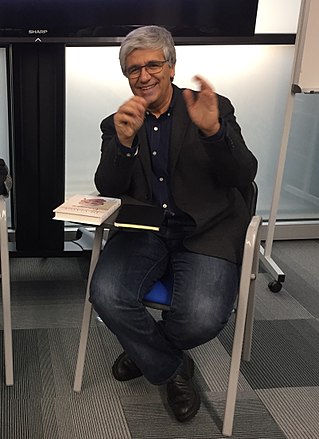
Andrea Tornielli is an Italian Catholic journalist and religious writer who serves as the editorial manager for the Vatican's Dicastery for Communication.
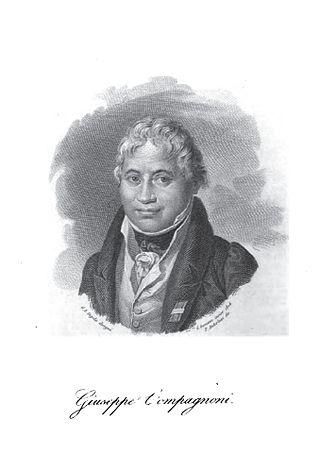
Marco Giuseppe Compagnoni was an Italian constitutionalist, writer and journalist, considered the "father of the Italian flag", since he was the first to propose the official use of the Italian tricolour for the flag of a sovereign Italian state, the Cispadane Republic, on 7 January 1797.
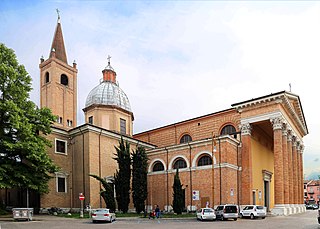
Forlì Cathedral, otherwise the Cathedral of the Holy Cross, is the Roman Catholic cathedral of Forlì, Emilia-Romagna, Italy. Formerly the seat of the bishop of Forlì, it has been since 1986 the episcopal seat of the Diocese of Forlì-Bertinoro.












